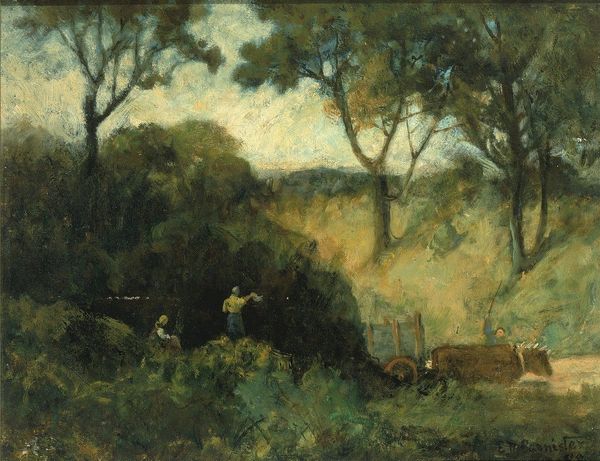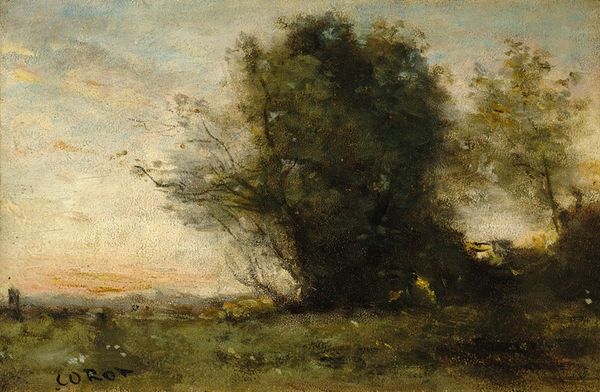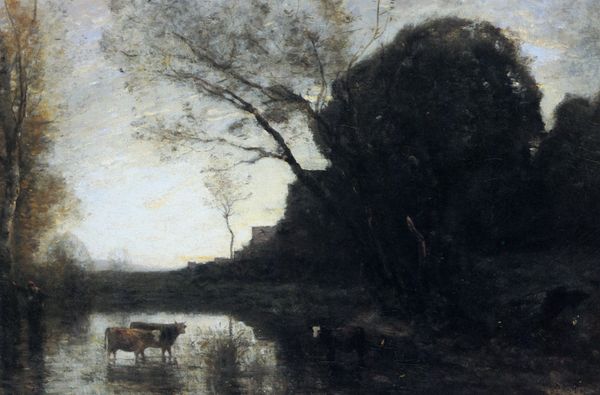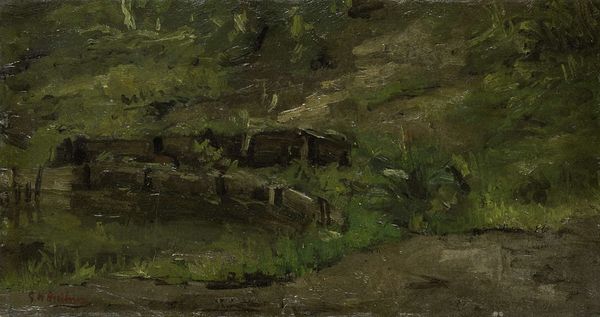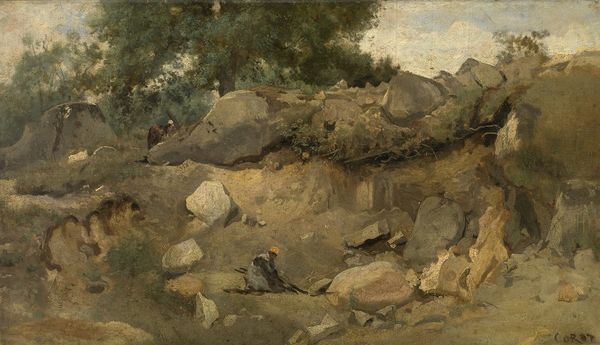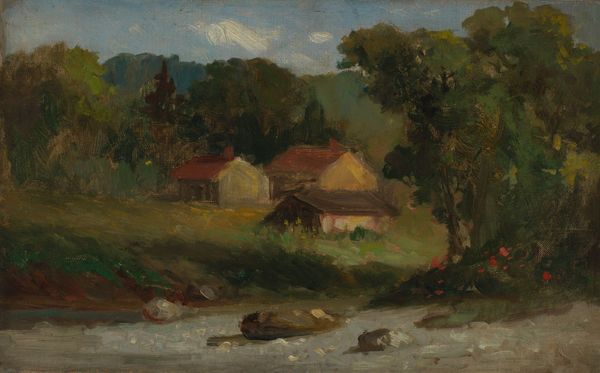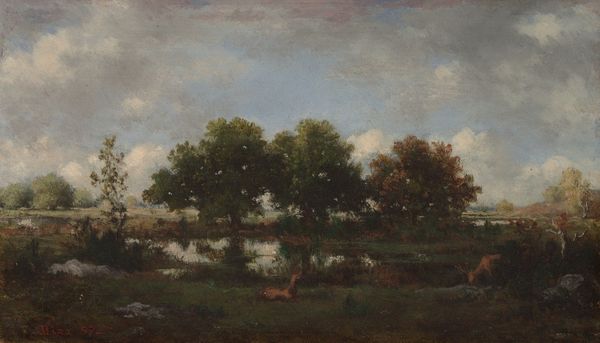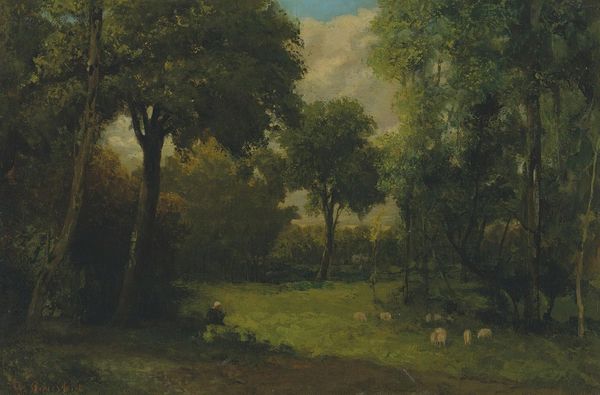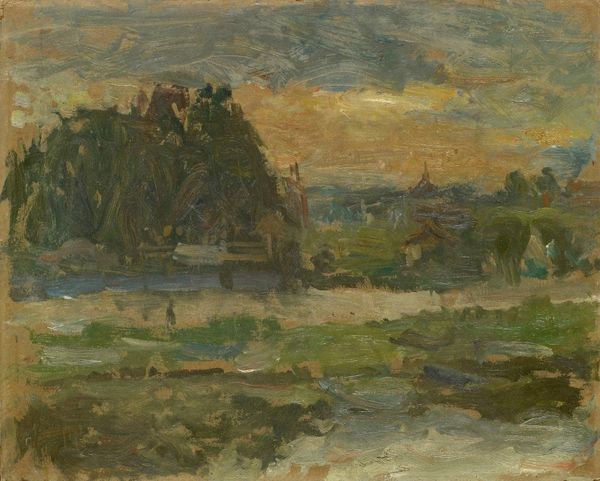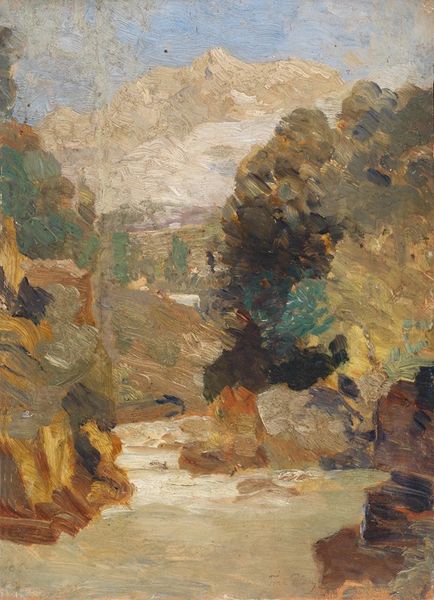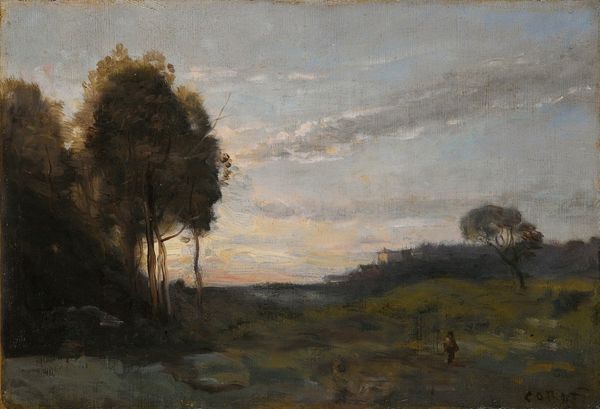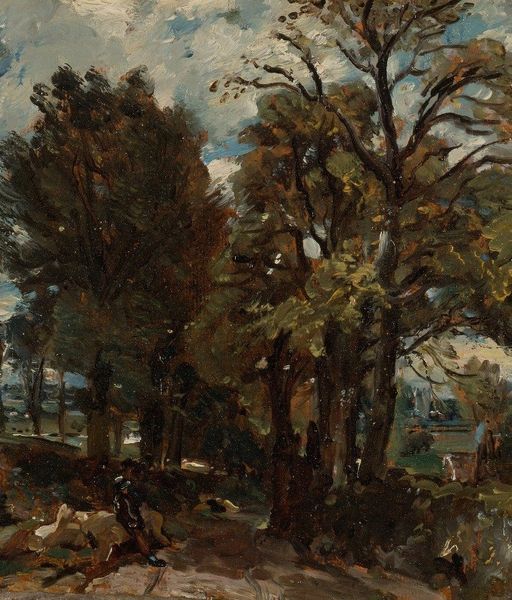
Copyright: Public Domain: Artvee
Editor: So, this is "Landschaft mit Kühen," or "Landscape with Cows," by Carl Spitzweg, painted in 1875, using oil paint in a plein-air style. It strikes me as almost intentionally unremarkable. The palette is so muted, the brushstrokes are loose. What stands out to you when you consider its historical context? Curator: Well, that's precisely what's interesting, isn't it? In 1875, painting *en plein air* was already an established practice, particularly within the Barbizon school and influencing Impressionism. Spitzweg, though, takes it in a distinctly German Romantic direction. Do you notice how the cows seem less like agricultural assets and more like… figures in a landscape of feeling? Editor: I see what you mean. They're integrated into the scene, almost swallowed by it, rather than being the central subject. Is this about idealizing rural life, or is there a more critical perspective at play? Curator: That's a key question. While ostensibly a landscape, it was produced during a period of immense social change and rapid industrialization in Germany. The painting almost presents a deliberately bucolic, nostalgic view, potentially a reaction to those transformations. The muted tones you mentioned, the almost hazy rendering of the scene – does that evoke a sense of yearning for a simpler past to you? Editor: Yes, it absolutely does. And the "unremarkable" quality I initially noticed now seems like a deliberate choice. It's not grand or dramatic; it’s intimate, even a little melancholy. Like a fading memory. Curator: Exactly. Consider how the burgeoning museum culture of the late 19th century further codified and presented these Romantic visions of the past, often serving nationalist agendas. How does knowing this influence your understanding? Editor: It adds a layer of complexity. It is more than just a simple landscape; it's participating in a larger cultural narrative, consciously or unconsciously reinforcing certain values. Thanks, that’s given me a lot to think about. Curator: Indeed, these landscapes served complex cultural purposes. Always look beyond the surface beauty and consider how institutions shaped the vision.
Comments
No comments
Be the first to comment and join the conversation on the ultimate creative platform.
